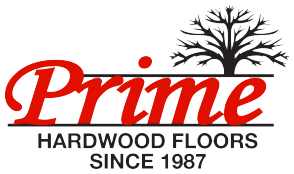Hardwood floor sanding removes the top layer of finish and a thin layer of wood from the surface to restore the floor’s smoothness and beauty.
Hardwood Floor Sanding FAQs
What is hardwood floor sanding?
Why should I consider sanding my hardwood floors?
Sanding rejuvenates worn or damaged hardwood floors, removes scratches, and prepares them for refinishing, extending their lifespan and enhancing their appearance.
How often should I sand my hardwood floors?
Frequency varies based on foot traffic and wear, but typically every 7-10 years. Frequent sanding can reduce the overall lifespan of your floors.
Can I sand my hardwood floors myself?
While DIY sanding is possible, it’s often best left to professionals with the right equipment and expertise to avoid mistakes that can entirely damage your hardwood floor.
Is dust a concern during sanding?
Our flooring experts offer dustless sanding and use dust containment systems to minimize airborne particles and maintain a clean environment.
Hardwood Floor Refinishing FAQs
What comes after sanding hardwood floors?
After sanding, hardwood floors need refinishing, which involves applying stain and protective coatings to achieve the desired color and sheen while safeguarding the wood.
What is hardwood floor refinishing?
Hardwood floor refinishing is the process of revitalizing worn or damaged hardwood floors by sanding down the existing finish and applying new stain and protective coatings.
How often should I refinish my hardwood floors?
The frequency depends on wear and tear, typically every 7-10 years. High-traffic areas may require more frequent attention.
Can I change the color of my hardwood floors during refinishing?
Yes, you can change the color of your hardwood floors by selecting a different stain during the refinishing process to achieve your desired look.
What is the drying time after refinishing?
Drying times vary based on the type of finish used but typically range from 24 to 48 hours before light use and longer before heavy furniture placement.
How can I maintain my hardwood floors after refinishing?
Regular cleaning, using area rugs, and placing protective pads under furniture can help extend the life of your newly refinished hardwood floors.
Custom Hardwood Flooring FAQs
What is custom hardwood flooring?
Custom hardwood flooring involves creating unique wood floor designs tailored to your preferences, which can include selecting specific wood species, patterns, finishes, and installation methods to match your aesthetic and functional needs.
Are there limitations to custom hardwood flooring designs?
While custom designs offer great flexibility, they may have structural or budgetary constraints. Consult with our flooring specialist to explore the possibilities within your project scope.
Can I choose custom hardwood flooring for specific design preferences or unique patterns?
Yes, custom hardwood flooring allows you to select unique wood species, inlays, borders, and patterns to match your design vision, creating a one-of-a-kind floor tailored to your preferences.
Solid Wood Flooring FAQs
Can solid wood flooring be installed in any room?
Solid wood is sensitive to moisture and temperature fluctuations, so it’s not recommended for bathrooms or areas with high humidity. However, it can be installed in most other rooms.
What is acclimatization, and is it necessary?
Acclimatization involves allowing the wood to adjust to the room’s temperature and humidity levels before installation. It is crucial to prevent issues like warping and cupping.
Can solid wood flooring be refinished if it becomes damaged or worn over time?
Yes, one of the advantages of solid wood flooring is that it can be sanded down and refinished multiple times to remove damage, scratches, or wear, effectively extending its lifespan.
Engineered Wood Flooring FAQs
Can engineered wood flooring be installed in all areas of my home?
Yes, engineered wood is versatile and can be installed in most rooms, including areas with higher humidity, like basements, as it’s less prone to warping and expanding than solid wood.
Do you need to acclimate engineered wood before installation?
Yes, acclimatization is essential. We must allow the planks to adapt to the room’s temperature and humidity for a specified period, typically 48-72 hours, to prevent issues like buckling.
Can engineered wood flooring be installed over existing flooring?
In many cases, yes. Engineered wood is a versatile option and can often be installed directly over existing flooring materials like plywood, concrete, or tile. However, it’s crucial to ensure the existing subfloor is flat, dry, and in good condition before installation.
Vinyl Flooring FAQs
Can vinyl flooring be installed in all areas of my home?
Yes, vinyl is versatile and suitable for most rooms, including kitchens and bathrooms, due to its resistance to moisture and spills.
Is professional installation necessary for vinyl flooring?
DIY installation is possible, but professional installation is recommended for precise measurements, subfloor preparation, and ensuring seamless, long-lasting results.
Do you need to acclimate vinyl flooring before installation?
Vinyl flooring typically does not require acclimatization, as it is not susceptible to moisture-related issues like wood.
How do I maintain vinyl flooring post-installation?
Regular sweeping or vacuuming and occasional damp mopping will keep your vinyl floors looking clean and well-maintained. Avoid abrasive cleaners and excessive moisture.
